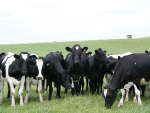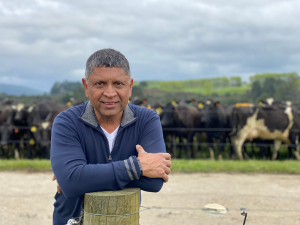BETTER CONTROL of livestock is the promised payback from work by a Massey University industrial designer and Gallagher Animal Management to produce gear to enable farm workers to discover potential faults in their electric fencing.
Tony Parker, Massey, and Mark Harris, Gallagher, say the equipment results from international research by a cross-disciplinary team of design, marketing and engineering specialists. Parker is associate pro vice-chancellor at the university’s College of Creative Arts; Harris is marketing manager at Gallagher. Parker led the industrial design and worked as part of the Gallagher’s project development team to bring the products to market.
The system includes a fence energiser with a separate, remotely mounted control panel, a portable hand-held fault finder remote, and permanently installed fence monitors that continuously check a zone of paddocks for fence performance. The new system powers an electric fence and monitors its performance. If a fault occurs the system reports to the user via text messaging.
All the fence energiser products will be at National Fieldays in June. Parker says they “exemplify the critical role design plays in creating desirable and internationally competitive manufactured products and services”.
Electric fences’ effectiveness can sometimes be hit by, say, bad weather. Harris says these new products “allow the fence to speak to the farmer”, even when he is not around the farm, representing a leap forward in practical electric fence technology.
A drop in fence performance triggers an alarm, displayed on the energiser controller and simultaneously sent to the farmer’s phone via text. Power to the fence can be turned off remotely to enable repairs, then restored using the same devices. “The consequence for the farmer is that he knows whether the fence is functioning or not,” Harris says.
“Farmers have always had a problem from time to time with fences not working and they usually only know after an animal escapes, but with this technology we can let them know in advance if there is a fault.”
Parker says the project involved many challenges and opportunities. “Transforming customer requirements and technological possibilities into a desirable system of products is a wicked problem. You cannot calculate the right answer, you have to design the best solution possible using a combination of research, creativity, visualisation, prototyping, critique and testing.”
Parker has worked before with Gallagher on energiser and livestock weighing and electronic identification products.











